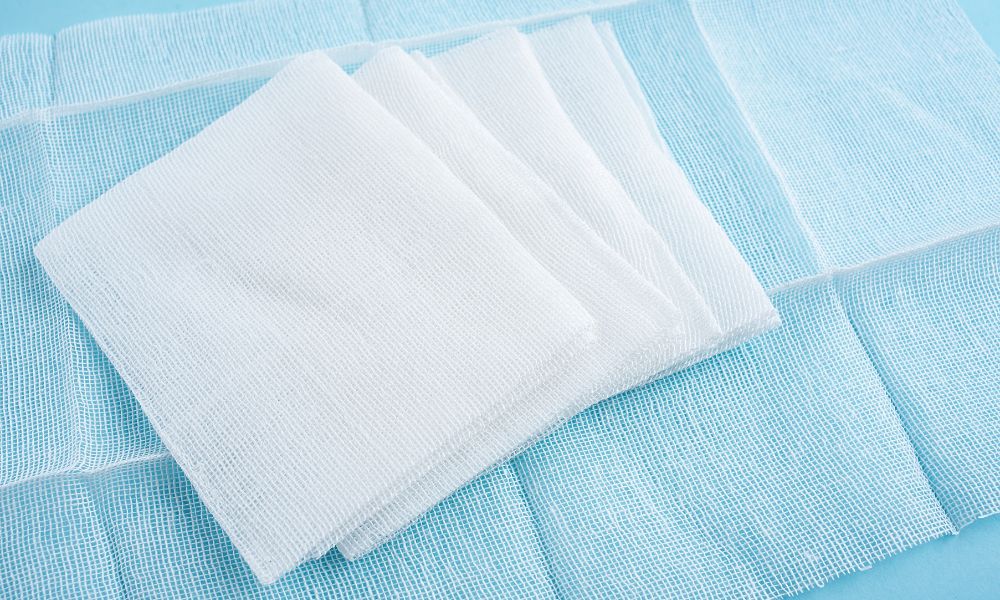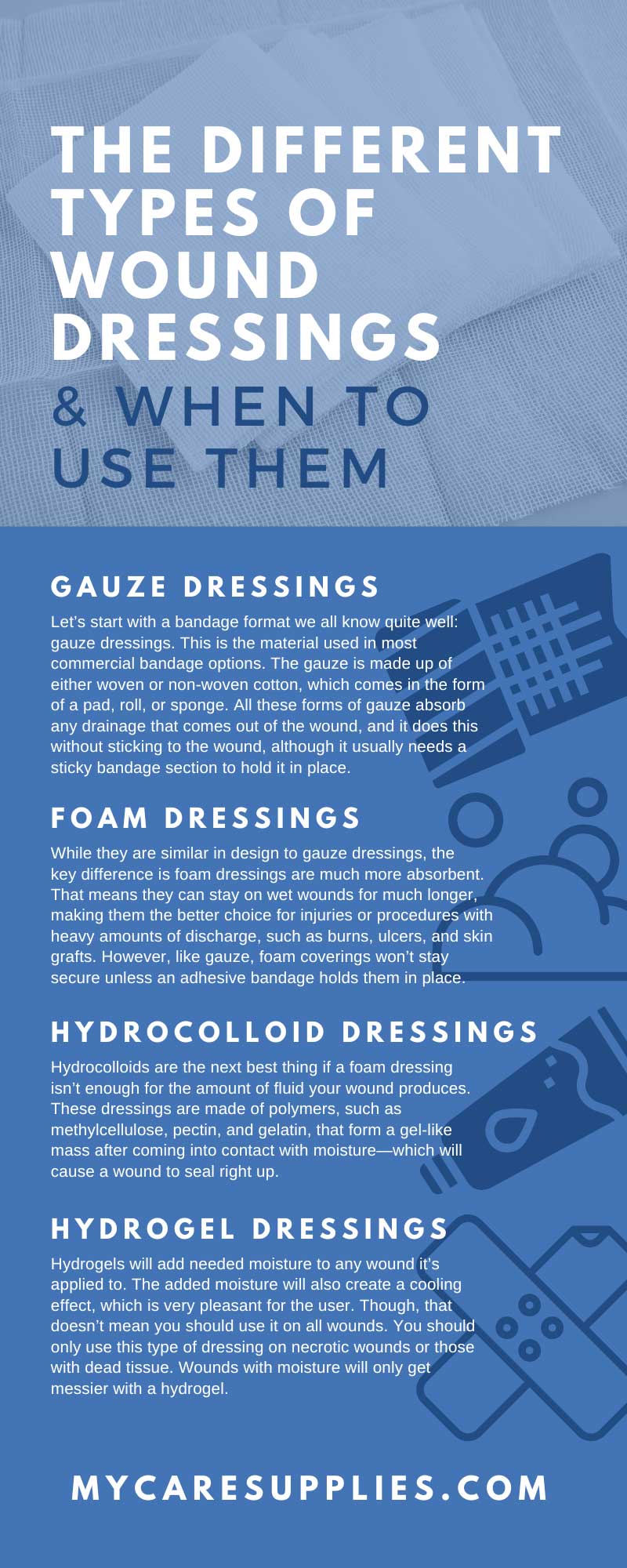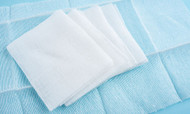The Different Types of Wound Dressings & When To Use Them
Posted by Jeanne Lowry on Dec 9th 2022

No matter who you are or what you do, there is always a risk of injury that you might run into. Obviously, some of us will be more prone to these types of dangers than others. Some people have dangerous jobs, while others might have become a bit frail in their old age. Regardless of the reason, you will need the proper tools to bandage an injury.
With such different types of wound dressings, it can be hard to pick the best fit. Luckily, you have us here to go over them and when to use each one. While you might recognize some of them, others you might not, but by the end of this blog post, you’ll have a much better understanding of each type.
Gauze Dressings
Let’s start with a bandage format we all know quite well: gauze dressings. This is the material used in most commercial bandage options. The gauze is made up of either woven or non-woven cotton, which comes in the form of a pad, roll, or sponge. All these forms of gauze absorb any drainage that comes out of the wound, and it does this without sticking to the wound, although it usually needs a sticky bandage section to hold it in place.
Thanks to the versatility of gauze and how readily available it is, you can use these dressings for virtually any type of wound. However, they still come with a few cons. The biggest one is you’ll need to change them regularly, meaning that they’re not the best for wounds that will take a long time to heal. Due to that issue, moist wounds need changing more often, making them an impractical option unless no others exist.
Foam Dressings
Another dressing type that’s quite similar to gauze is foam. The types of foam used in this dressing are typically made of polyurethane or a film-coated gel. This makes them very hydrophilic, meaning that liquid won’t stick to them. This ensures the bandage won’t stick to the wound.
While they are similar in design to gauze dressings, the key difference is foam dressings are much more absorbent. That means they can stay on wet wounds for much longer, making them the better choice for injuries or procedures with heavy amounts of discharge, such as burns, ulcers, and skin grafts. However, like gauze, foam coverings won’t stay secure unless an adhesive bandage holds them in place.
Hydrocolloid Dressings
Hydrocolloids are the next best thing if a foam dressing isn’t enough for the amount of fluid your wound produces. These dressings are made of polymers, such as methylcellulose, pectin, and gelatin, that form a gel-like mass after coming into contact with moisture—which will cause a wound to seal right up.
However, you should never use this dressing on a wound that’s already infected. Doing so will cause the infection to worsen. You have nothing to worry about if you clear the infection before use. Please note: this hydrocolloid dressing can make an injury look infected when it’s not. Despite that, these dressings are great for burns and ulcers due to their ability to stop excess drainage.
Hydrogel Dressings
While the name hydrogel might sound similar to hydrocolloid, it’s actually quite the opposite. Hydrogels are commonly used on wounds that have practically no moisture. While this might sound like a good thing, keeping in mind the issues excess fluids can present, dryness actually makes it much more difficult for the injury to heal.
Hydrogels will add needed moisture to any wound it’s applied to. The added moisture will also create a cooling effect, which is very pleasant for the user. Though, that doesn’t mean you should use it on all wounds. You should only use this type of dressing on necrotic wounds or those with dead tissue. Wounds with moisture will only get messier with a hydrogel.
Alginate Dressings
This dressing type is quite unique. It takes the concepts of both hydrocolloids and hydrogels and combines them in a way. Alginate dressings are both woven and non-woven materials that form a hydrophilic gel once in contact with a wound’s fluids. The salt it uses comes from a particular species of brown seaweed and causes coagulation.
Unlike the previous two dressings, which suction to the wound due to the excess moisture, this one needs a secondary bandage to hold it in place. Another benefit of this type of dressing is that it’s quite effective at helping to heal infected wounds. Alginate dressings are also great for wounds with tunneling, but you should ensure the wounds don’t go too deep because tendons and bones don’t respond well to them.
Transparent Film Dressings
Most wounds need oxygen to heal properly. Without effective ventilation, the injury will take longer to heal. Transparent film dressings are thin enough to let oxygen through yet strong enough to provide a barrier against an unsterile environment. On top of that, moisture vapor from the injury will easily be able to escape in the same way oxygen flows in. The transparent nature of this dressing also makes it easy to see how well the healing is progressing without needing to remove it.
The downside here is that this type of dressing can stick to certain wounds, which can negatively impact the healing process. It’s also not good for any wounds with heavy amounts of drainage since it doesn’t have a good way to absorb that fluid. However, that doesn’t mean this type of bandage is useless. They’re perfect for all burns except third-degree ones. They can also be useful for fragile skin since they won’t need to be removed often.
Which Should You Choose?
Now that we’ve gone over all the different types of wound dressings and when to use them, it’s time to decide which ones you should get. Ideally, you should have all of them so you’re ready for anything. However, that isn’t very realistic. Instead, you need to determine what types of injuries you’re most prone to getting and decide from there.
Once you know which types of dressings you need, check out the rest of our site. Our inventory of wound care supplies online has everything you’ll ever need. Find the ones that best suit your needs, and we’ll get them shipped out to you right away.


